Detox is a trendy term, and “cleansing” regimens abound. But many of them go about it the wrong way that could leave you feeling worse than when you started. And when you consider all the toxins you pick up in the air, water, and food — not to mention the ones generated by unwelcome microbes inside us — your instinct may be to detox as fast as you can (1).
But detoxing faster is not better and that approach is more likely to backfire with you feeling worse rather than better. To properly prepare you body for detox, the first step is to support your body’s pathways for toxin elimination first. That helps you effectively remove toxins from your body.
Think of your body as a vast city. Each house is like one of your cells. What if every homeowner took the garbage out, yet the trash was never collected? It would pile up and create problems. The same thing could happen in your body. If you start pulling toxins out, but there’s no place for them to go, they pile up. And that could heighten the very symptoms you’re trying to improve.
For this reason, an effective regimen for detox starts with drainage. The order in which your body moves fluids to remove toxins is illustrated in the drainage funnel image below. Keep this image in mind as you continue to read to understand why its so important to have your drainage pathways open before ramping up detox.

The Colon
Your large intestine or colon is at the bottom of the drainage funnel. If your colon is backed up, everything upstream from it can become backed up as well. That can happen when your bowel is sluggish and not moving adequately.
If you have a sluggish bowel, it’s a sign you’re not efficiently removing the wastes and toxins your body needs to clean out. Pushing detox without first supporting this drainage pathway is a big mistake (2).
Going back to our analogy of your body as a vast city, a slow bowel is like a waste processing plant in your city that doesn’t empty its tanks. Similarly, if you try to force upstream detox when the outflow isn’t moving, issues will arise.
So, the number one priority for healthy detoxification is the need to poop regularly! That makes room for wastes and toxins that are upstream to flow downward for elimination via your stools. Ideally for detoxification and restoring optimal health, you want to be pooping two or three times a day. That doesn’t mean watery stools, but gentle elimination without straining.
Liver and Bile Ducts
Just above your colon in the drainage funnel are your liver and bile ducts. Your liver is like the reservoirs that collect the wastewater from the entire town, separating the water and wastes. Then the water can be cleaned and sent back to the houses for reuse.
Your liver filters toxins from your blood and processes them for elimination. These are then deposited in your bile. The bile is released through the common bile duct into your small intestine during digestion. Some of the bile is caught up in your stools and eliminated. That helps lower your toxin level (3).
Lymphatic System
The next step up in your drainage funnel is your lymphatic system. Though sometimes overlooked, it’s of vital importance. Your lymphatic system includes a network of vessels that drain fluids from your body tissues.
Your blood vessels “leak” fluid into your tissues — several litres a day, in fact. One of your lymphatic system’s jobs is to collect the fluid and return it to your blood. But first, your lymph nodes filter out pathogens, bacteria, and toxins so your immune cells can deal with them (4).
Unfortunately, your lymph doesn’t always flow as much as needed. Unlike your cardiovascular system, your lymph has no pump pushing it where it needs to go. Poor lymphatic movement results in tissue swelling. If you’ve ever had fluid build-up in your ankles, you know what this lymph stagnation is like.
Sluggish lymph movement is also linked to increased cellulite, as the lymph can get “stuck” in fat tissue. Cellulite is the lumpy, dimply skin you may get on your thighs, hips, butt, and abdomen. This is particularly common in women (5, 6).
Organs and Tissues
Above your lymphatic system in the drainage funnel are your organs and tissues. Your brain is a key focus here. It doesn’t have a true lymphatic system. Instead, it clears cellular wastes and fluids from your brain through the glymphatic system (7).
The glymphatic network in your brain works like a fleet of garbage trucks, collecting the waste in a city. Then the garbage is delivered to your lymphatic system for removal (8,9). Sounds very efficient, doesn’t it? The caveat is that waste removal in your brain mainly happens when you sleep.
During the day, your brain is busy processing information, so garbage collection is a low priority (10,11). Adequate sleep is the best way to support this part of your drainage funnel, and most experts recommend at least 7 hours per night (12). Sleep is like fuel for all those little garbage trucks in your brain. Possible signs that your brain isn’t draining well are brain fog, headaches, and memory issues.
Cells
Your cells are at the very top of the drainage funnel. Cells are like houses in a city. Each home has waste products from tubs, toilets, and rubbish bins. Your cells have toxins and other wastes they need to get rid of too.
Some of the wastes or toxins your cells accumulate come from external sources, such as air pollutants, heavy metals, mycotoxins and pesticides. These toxins can slow down the energy production units within your cells called mitochondria (13). Your mitochondria generate the energy needed to support detoxification, so you need to get rid of them.
Open all the channels for effective detox
Remember, the solution isn’t to push the detoxification of contaminants on the first day of your detox journey! If all the drainage pathways described above aren’t flowing, ramping up detox isn’t wise. This would be like setting out your garbage several days before your neighbourhood’s rubbish collection on a hot summer day. The waste would sit and stagnate, stinking up the community.
To lay the right groundwork to start detoxing and healing at the cellular level, you need to tackle the drainage funnel from the bottom up. If you nurture all parts of the drainage funnel, you’ll be better equipped for deeper cleansing.
What part of the drainage funnel do you need to get flowing?
By Microbe Formulas
References
1 – Silins, I., & Högberg, J. (2011, February 24). Combined Toxic Exposures and Human Health: Biomarkers of Exposure and Effect. International Journal of Environmental Research and Public Health, 8(3), 629–647. https://doi.org/10.3390/ijerph8030629
2 – Andrews CN, Storr M. The pathophysiology of chronic constipation. Can J Gastroenterol. 2011 Oct;25 Suppl B(Suppl B):16B-21B. PMID: 22114753; PMCID: PMC3206564.
3 – Hodges, R. E., & Minich, D. M. (2015). Modulation of Metabolic Detoxification Pathways Using Foods and Food-Derived Components: A Scientific Review with Clinical Application. Journal of Nutrition and Metabolism, 2015, 1–23. https://doi.org/10.1155/2015/760689
4 – Moore, J. E., & Bertram, C. D. (2018, January 5). Lymphatic System Flows. Annual Review of Fluid Mechanics, 50(1), 459–482. https://doi.org/10.1146/annurev-fluid-122316-045259
5 – Pereira de Godoy, J. M., Pereira de Godoy, A. C., & Guerreiro Godoy, M. D. F. (2017, October 16). Considering the hypothesis of the pathophysiology of cellulite in its treatment. Dermatology Reports, 9(2). https://doi.org/10.4081/dr.2017.7352
6 – de Godoy, M., & Pereira de Godoy, J. M. P. (2011, May). Treatment of cellulite based on the hypothesis of a novel physiopathology. Clinical, Cosmetic and Investigational Dermatology, 55. https://doi.org/10.2147/ccid.s20363
7 – Jessen, N. A., Munk, A. S. F., Lundgaard, I., & Nedergaard, M. (2015, May 7). The Glymphatic System: A Beginner’s Guide. Neurochemical Research, 40(12), 2583–2599. https://doi.org/10.1007/s11064-015-1581-6
8 – Benveniste, H., Liu, X., Koundal, S., Sanggaard, S., Lee, H., & Wardlaw, J. (2018, July 11). The Glymphatic System and Waste Clearance with Brain Aging: A Review. Gerontology, 65(2), 106–119. https://doi.org/10.1159/000490349
9 – Nedergaard, M. (2013, June 28). Garbage Truck of the Brain. Science, 340(6140), 1529–1530. https://doi.org/10.1126/science.1240514
10 – Eugene AR, Masiak J. The Neuroprotective Aspects of Sleep. MEDtube Sci. 2015 Mar;3(1):35-40. PMID: 26594659; PMCID: PMC4651462.
11 – Xie, L., Kang, H., Xu, Q., Chen, M. J., Liao, Y., Thiyagarajan, M., O’Donnell, J., Christensen, D. J., Nicholson, C., Iliff, J. J., Takano, T., Deane, R., & Nedergaard, M. (2013, October 18). Sleep Drives Metabolite Clearance from the Adult Brain. Science, 342(6156), 373–377. https://doi.org/10.1126/science.1241224
12 – Worley SL. The Extraordinary Importance of Sleep: The Detrimental Effects of Inadequate Sleep on Health and Public Safety Drive an Explosion of Sleep Research. P T. 2018 Dec;43(12):758-763. PMID: 30559589; PMCID: PMC6281147.
13 – Zolkipli-Cunningham, Z., & Falk, M. J. (2017, November). Clinical effects of chemical exposures on mitochondrial function. Toxicology, 391, 90–99. https://doi.org/10.1016/j.tox.2017.07.009




